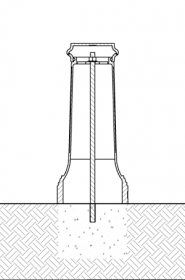Installing Bollards using Adhesive Anchoring
Decorative bollards can be installed into existing concrete with an adhesive anchoring system. These bollards are used to define architectural perimeters, create architectural highlights, and act as visual traffic guidance devices. Please note that this installation method offers little impact resistance, and the function of the bollard is primarily aesthetic.
Reliance Foundry carries an epoxy-like, adhesive anchoring system that can be used to install bollards in decorative applications. In this process, an adhesive such as the AC100+ Gold Adhesive Anchoring System(1) is used to secure the bollard’s threaded rod.
PARTS LIST
|
# |
PART |
QTY |
|---|---|---|
|
1 |
Bollard Base |
1 |
|
2 |
Bollard Cap |
1 |
|
3 |
Threaded Bar 1″ |
1 |
|
4 |
Washer 1″ |
1 |
|
5 |
Hex Nut 1″ |
1 |
|
6 |
Hexagon Socket Set Screw |
3 |
|
7 |
Plastic Plug |
3 |
INSTALLATION EQUIPMENT
|
1-1/8″ Masonry Drill Bit |
1-1/2″ Wrench |
|
3/16″ Hex Key |
Hammer Drill or Rotary Hammer |
|
Chalk |
Caulking Gun |
|
Level |
Measuring Tape |
|
AC100+ Gold Adhesive Anchoring System(1) |
|
NOTE
- To protect the finish, keep bollards in original packaging until the exact moment of installation.
- Handle with care to avoid scratching or damaging bollard surfaces as abrasions will lead to rust.
- Once scratched, bollards cannot be repaired to original form without re-finishing the entire surface.
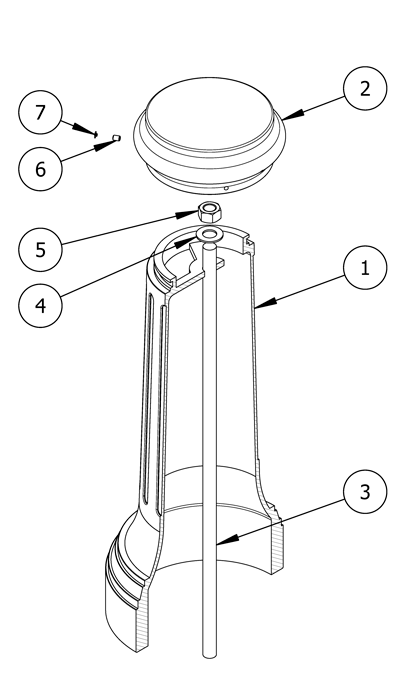
Before installation
Check for hazards
Always check for hazards such as water pipes, gas lines, and underground wiring before drilling.
Clean the surface
Dirt and debris can affect the line of sight and disrupt placement of the bollards.
Use a broom or pressure washer to clean the concrete surface prior to bollard installation.
Study the site plans
Site plans are generally created by the architect of the project.
Refer to site plans to locate and mark the precise center point of each bollard.
For secure installation, ensure there is a minimum radius(2) of solid concrete around each mark.
Drill the hole
Create pilot hole
Tap a pilot divot hole in the center of each mark.
This will prevent the hammer drill or rotary hammer from drifting while boring the hole.
Set the depth control on the hammer drill (or rotary hammer) to 4″
If depth control is not available, mark 4″ on the masonry bit.
Drill the hole
Drill a hole that has a 1-1/8″ diameter and 4″ depth.
Drill on high speed, using the hammer function if available.
Check the masonry bit often to ensure it remains debris-free.
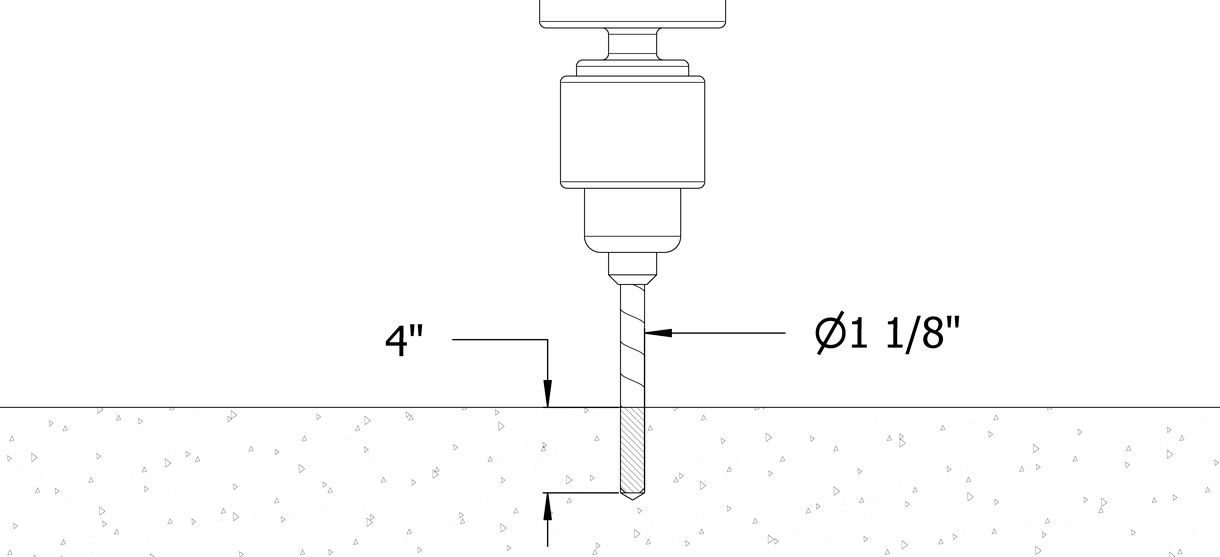
Secure the bollard
Clear the hole
Clear the hole of all debris and/or standing water using the vacuum. Use a brush to remove any remaining loose particles.

Fill the hole with adhesive
Using the caulking gun, dispense the adhesive until the hole is one-quarter full.
To prevent air pockets from forming, withdraw the mixing nozzle slowly.
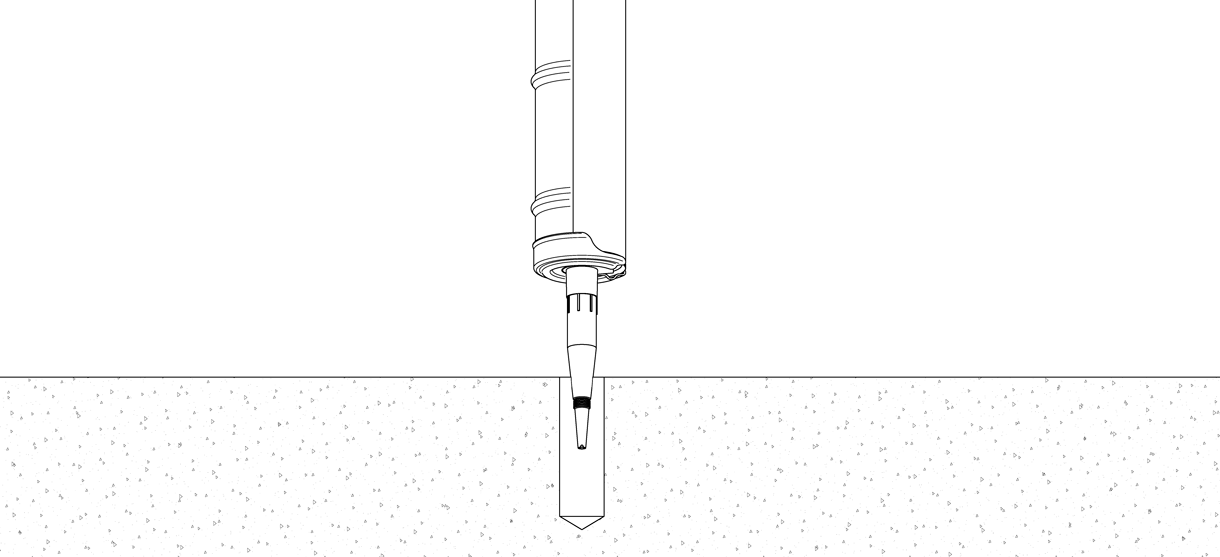
Place the bollard near the installation
Keep the bollard in its protective packaging. Carefully place the bollard near the installation.
When ready to install, remove its protective packaging.
Set the bollard on top of the drilled hole
Set the bollard base upright and maneuver it so the center lines up with the drilled hole.
Insert the threaded rod
Lower the threaded rod through the bollard’s shaft. Insert the threaded rod the full 4″ into the hole while turning for positive adhesion. The rod should be centered in the bollard’s shaft.
Note: A minimum of 45 minutes at 68˚F is required for the anchoring system to set. Do not disturb torque or load the anchor until adhesive has fully cured.
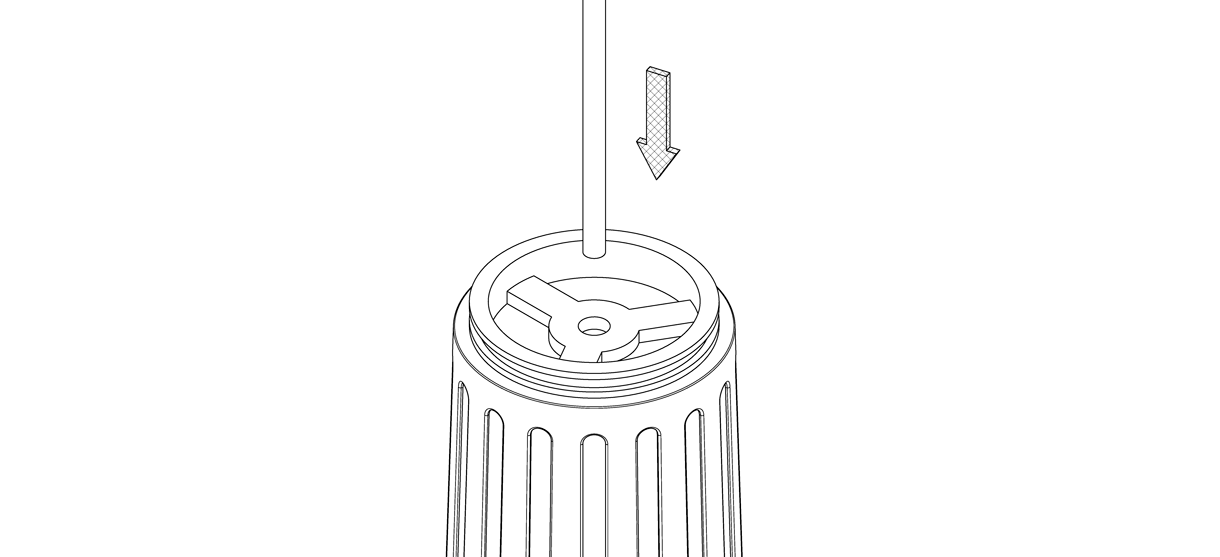
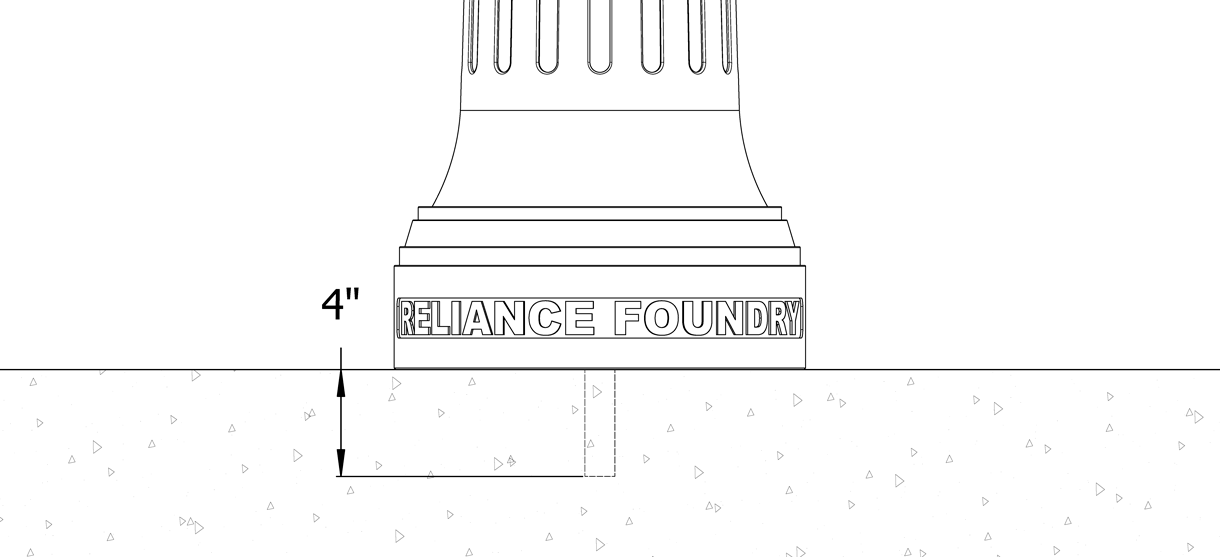
Set the washer over the threaded rod
Place the washer over the threaded rod so that it rests on top of the shaft of the bollard.
Apply the 1″ nut to the threaded rod and use a wrench to tighten until the bollard is secure.
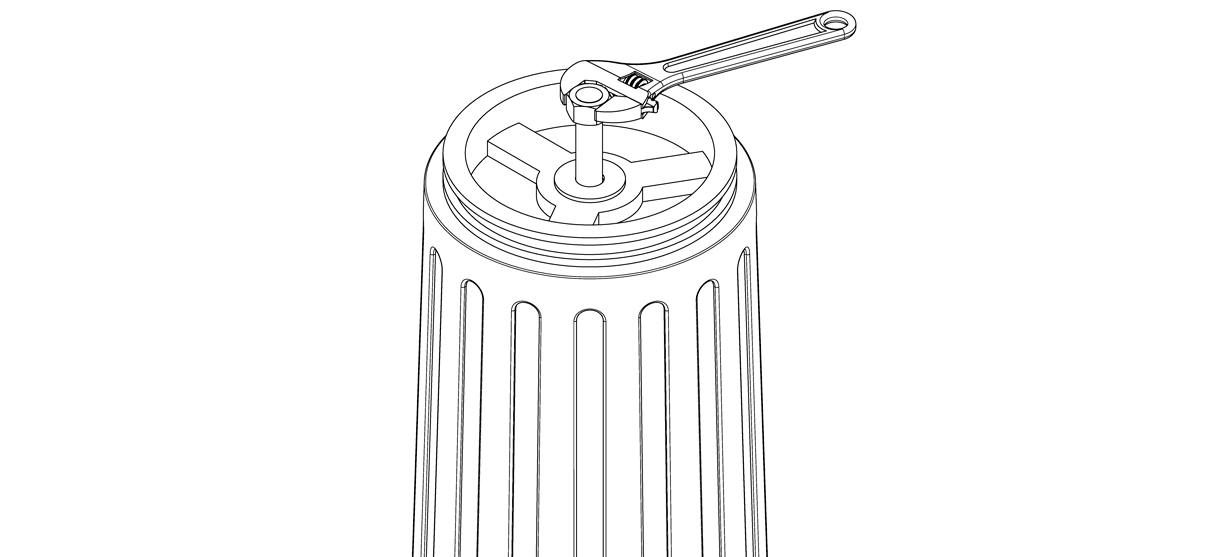
Secure the bollard’s cap
Remove bollard cap from its packaging.
Place the cap on the top of the shaft of the bollard.
Secure and align the cap to the bollard base with the three set screws. Tighten in equal amounts to ensure that the cap remains centered.
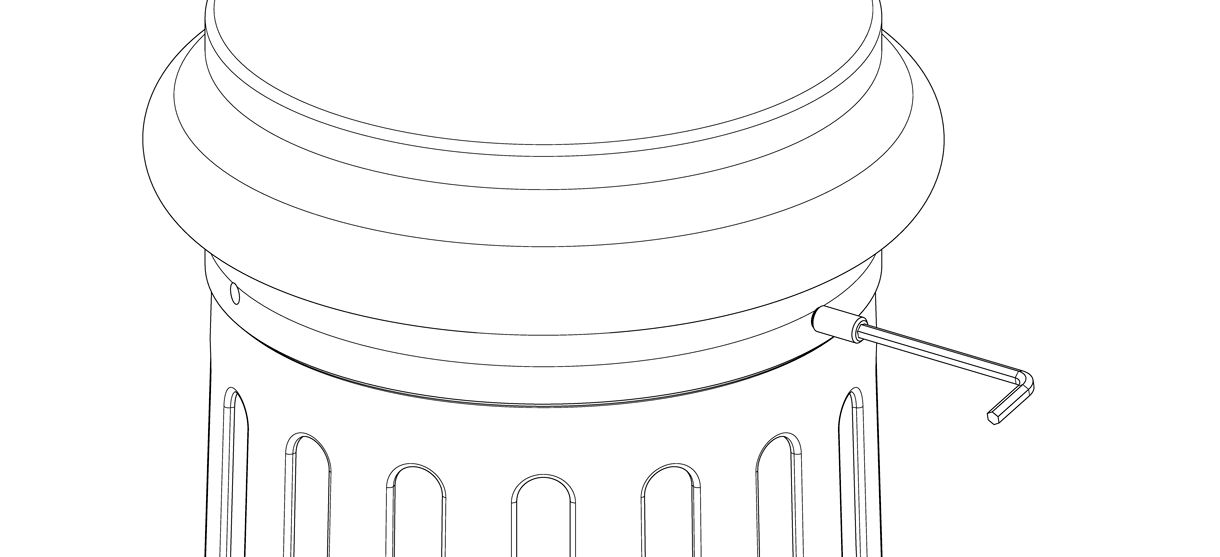
Place the plastic plugs (A) over the heads of the set screws.
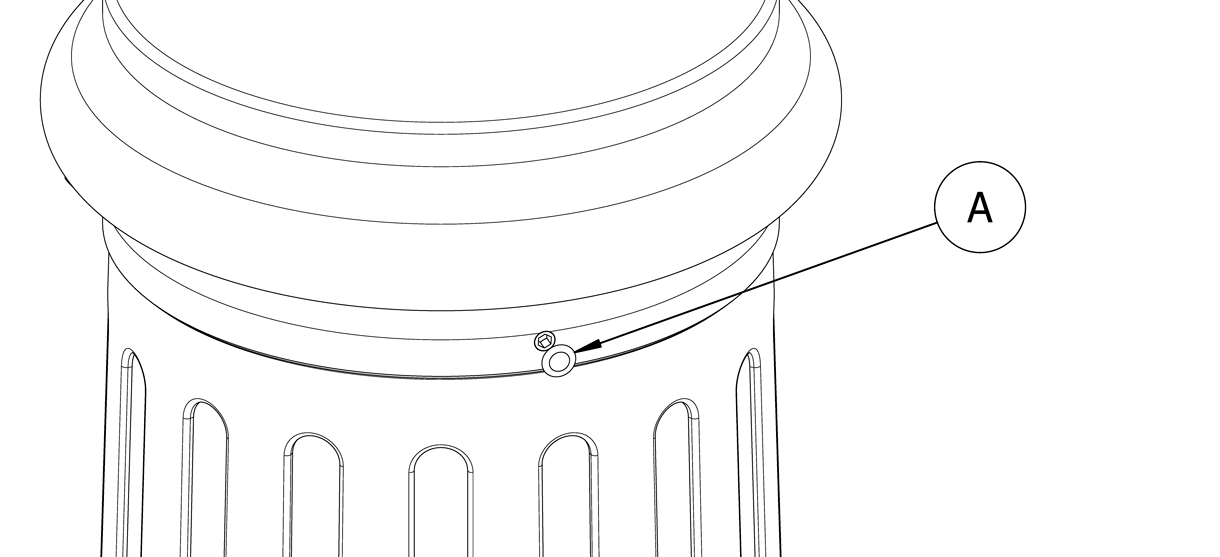
Inspect
Inspect the installation
From a distance, examine the plane of view.
Ensure the bollard is plumb.
Check the bollard for any signs of surface damage
Abrasions should be covered as soon as possible to prevent rust and ensure the proper life of the bollard. For damage repair or other servicing needs, please contact Reliance Foundry’s sales department.
Care and maintenance
Reliance Foundry manufactures its products to the highest design standards to ensure their durability. Reliance Foundry’s bollards are finished with long-lasting powder coating. In most North American environments, routine inspections and cleaning will ensure that bollards retain their aesthetic appeal. Proper care and maintenance are required to maintain the finish and ensure a full service life.
1. Please refer to the adhesive manufacturer’s MSDS(included in shipment) before using.
2. Adhesive anchor manufacturers such as www.powers.com recommend a minimum radius of 5″.
